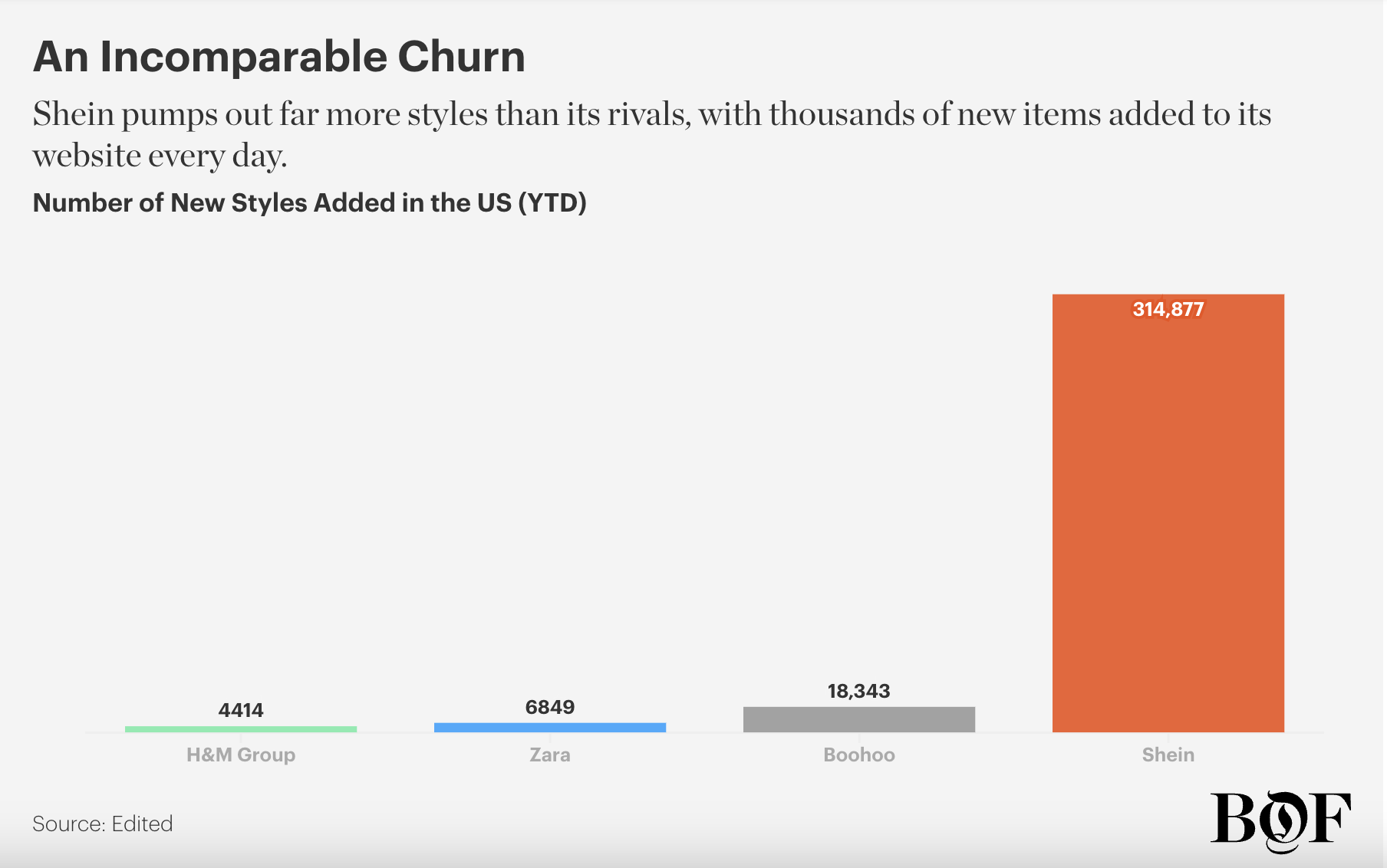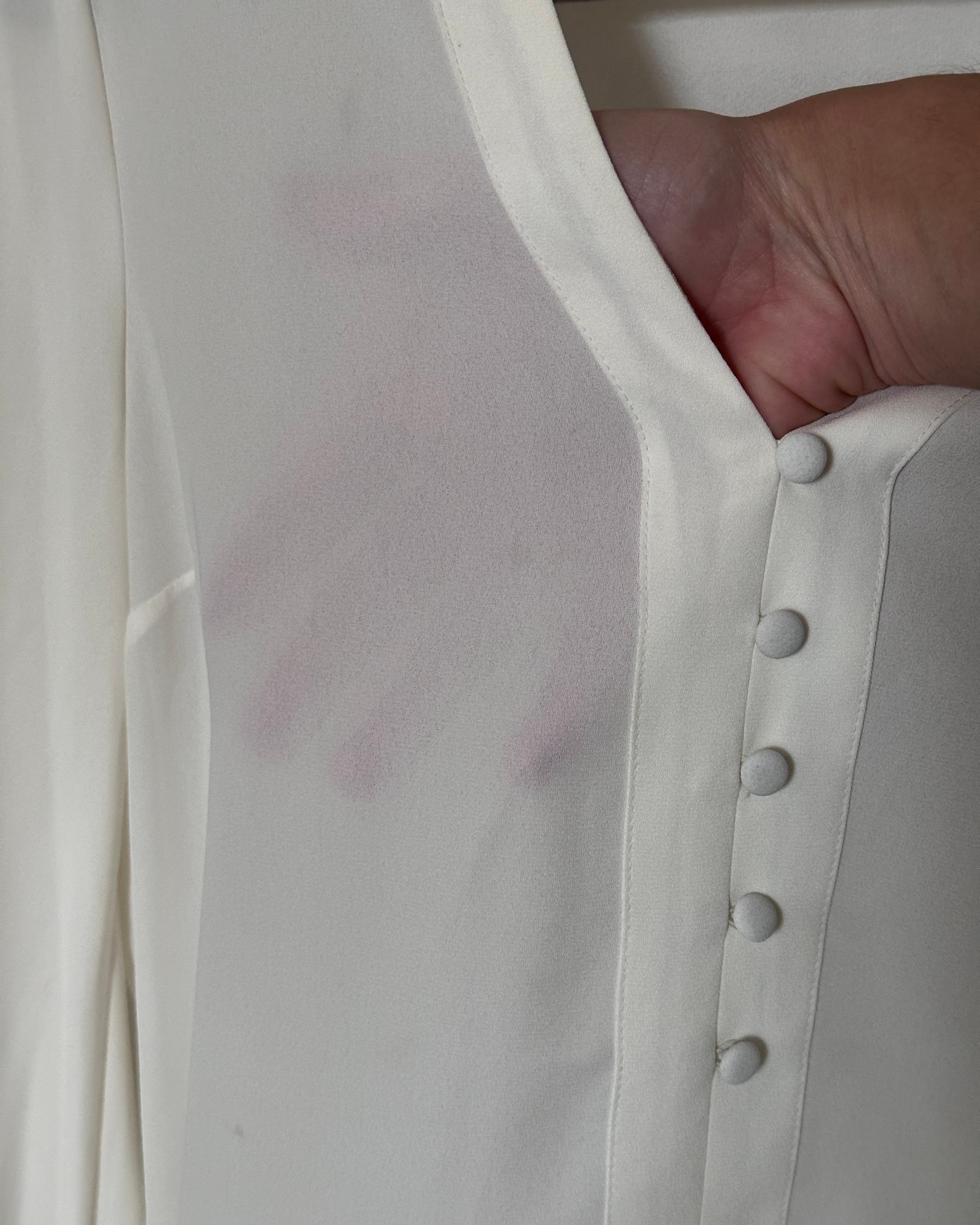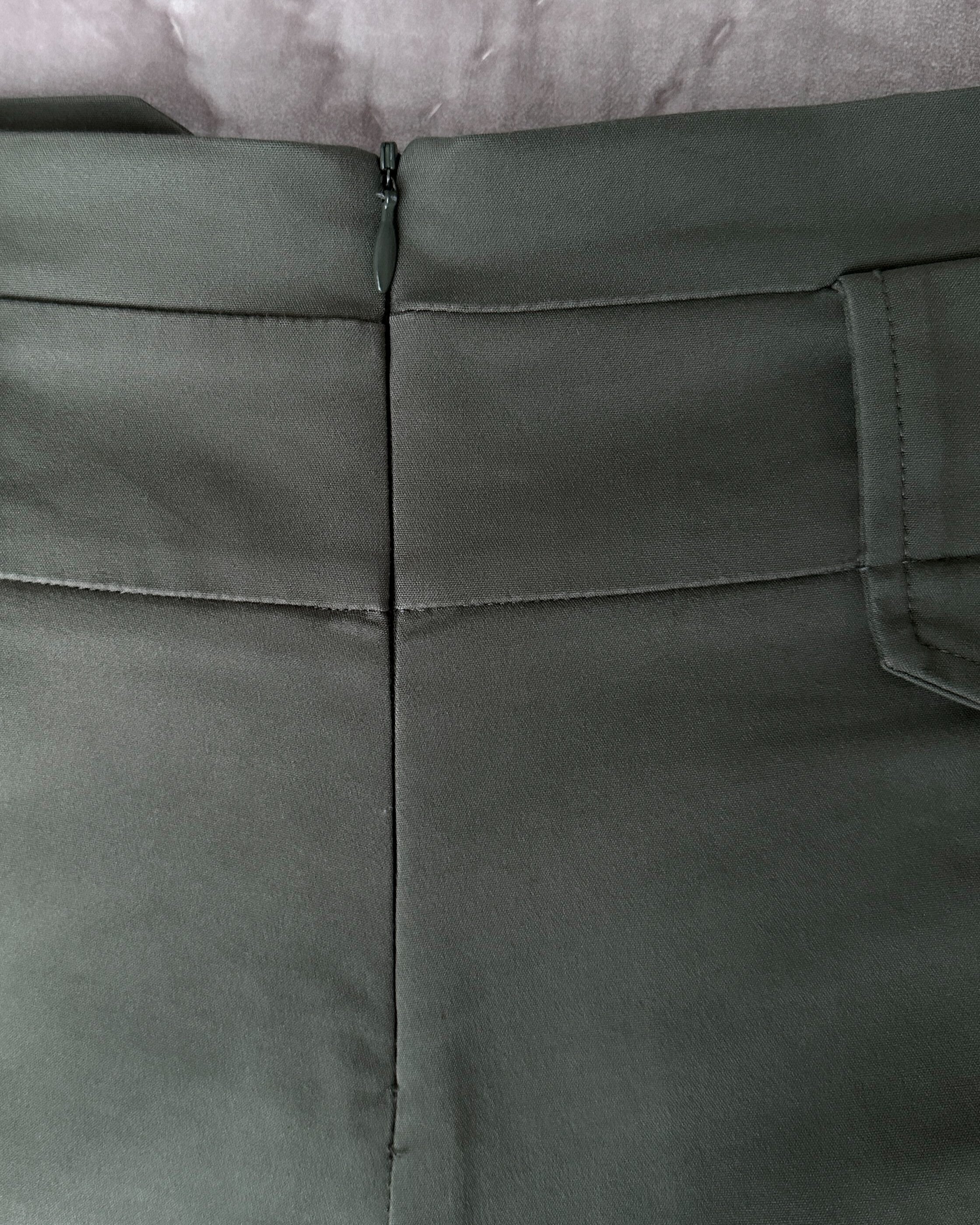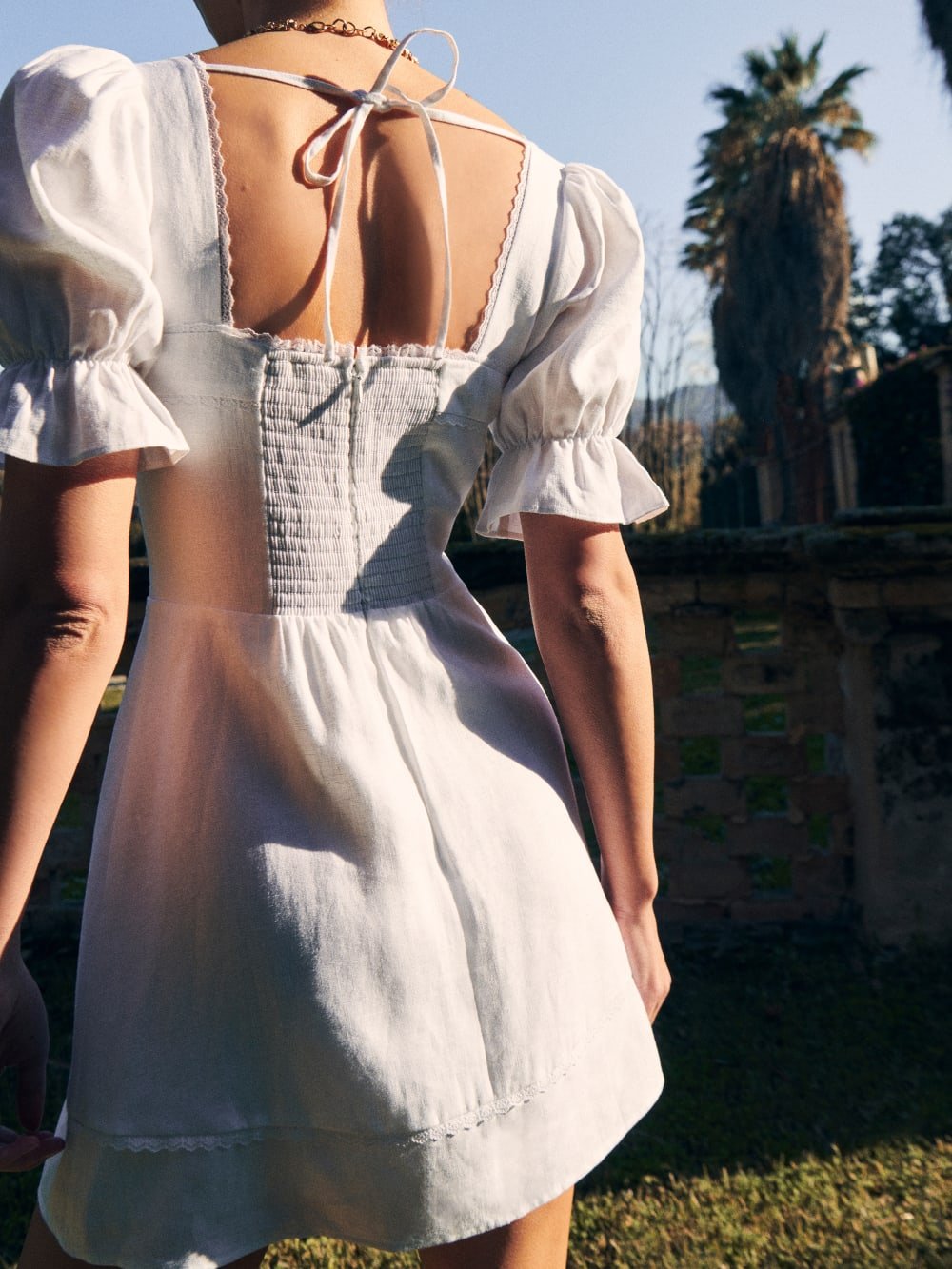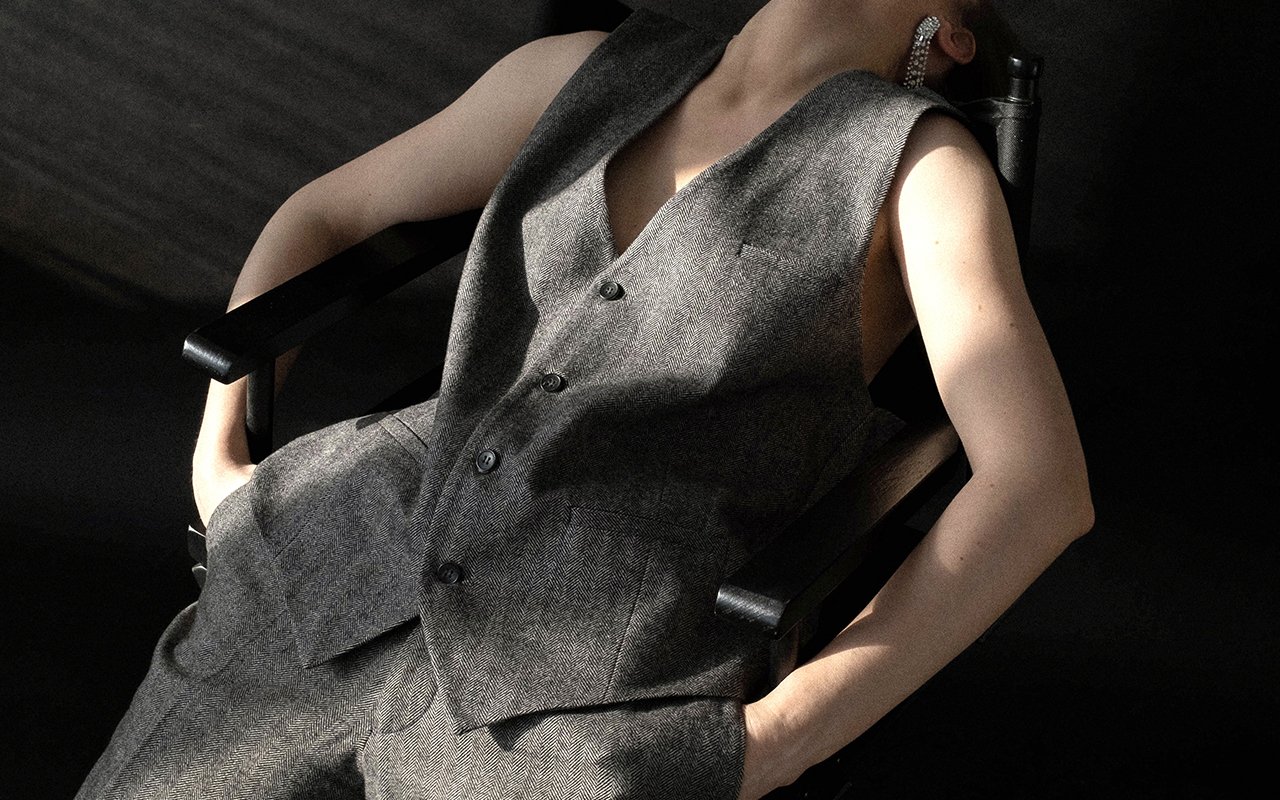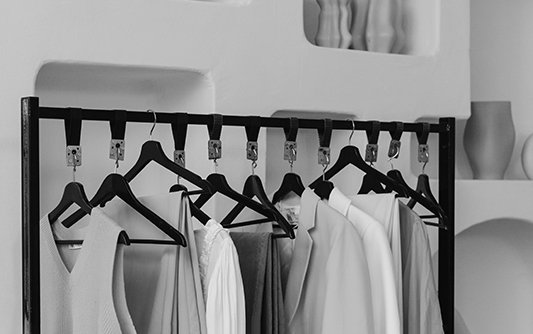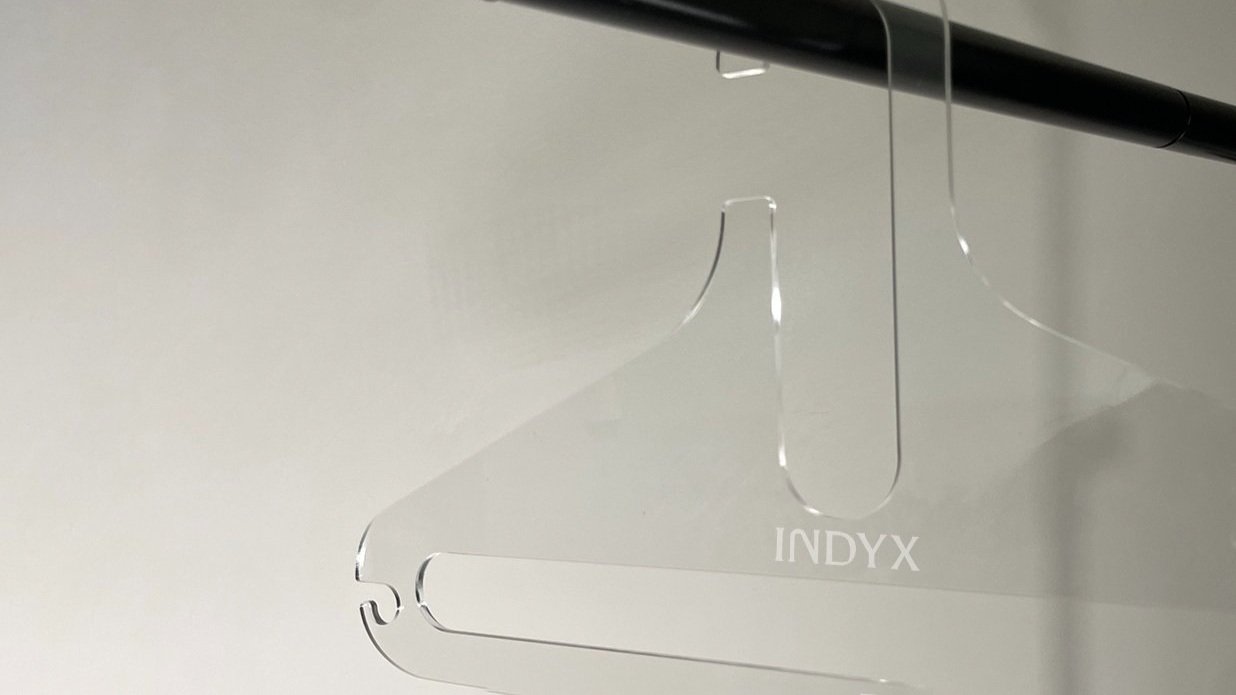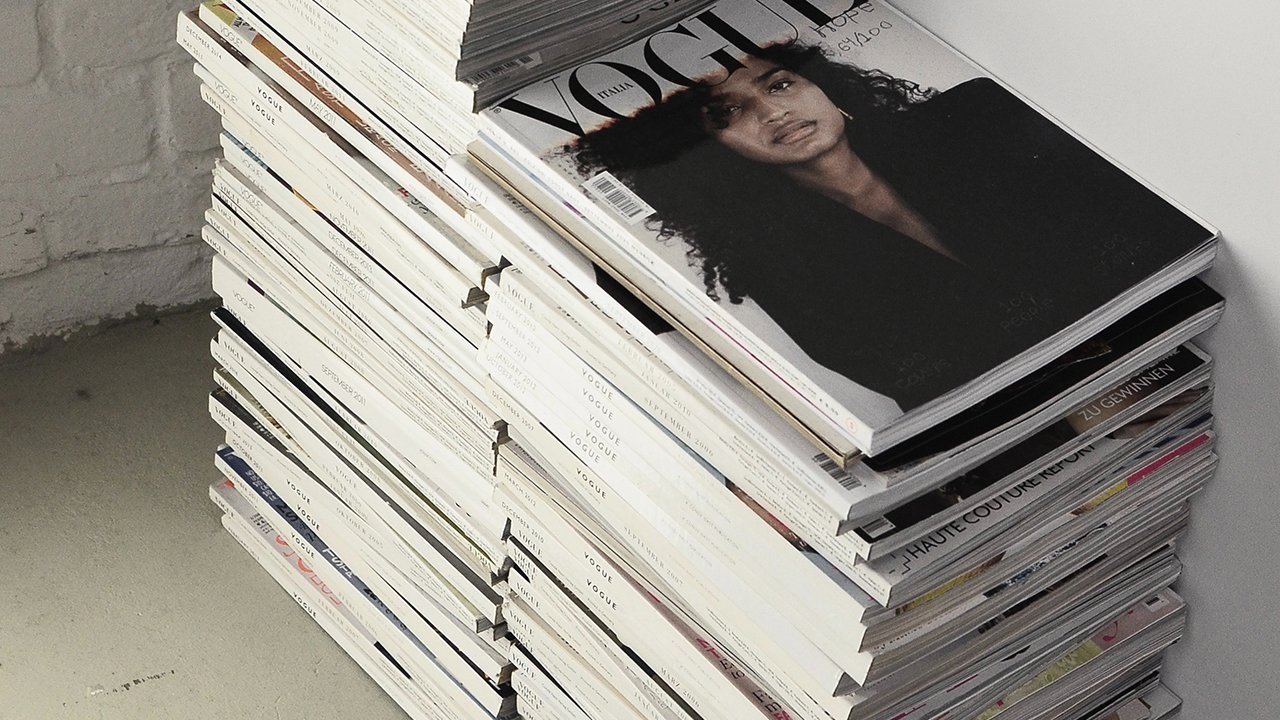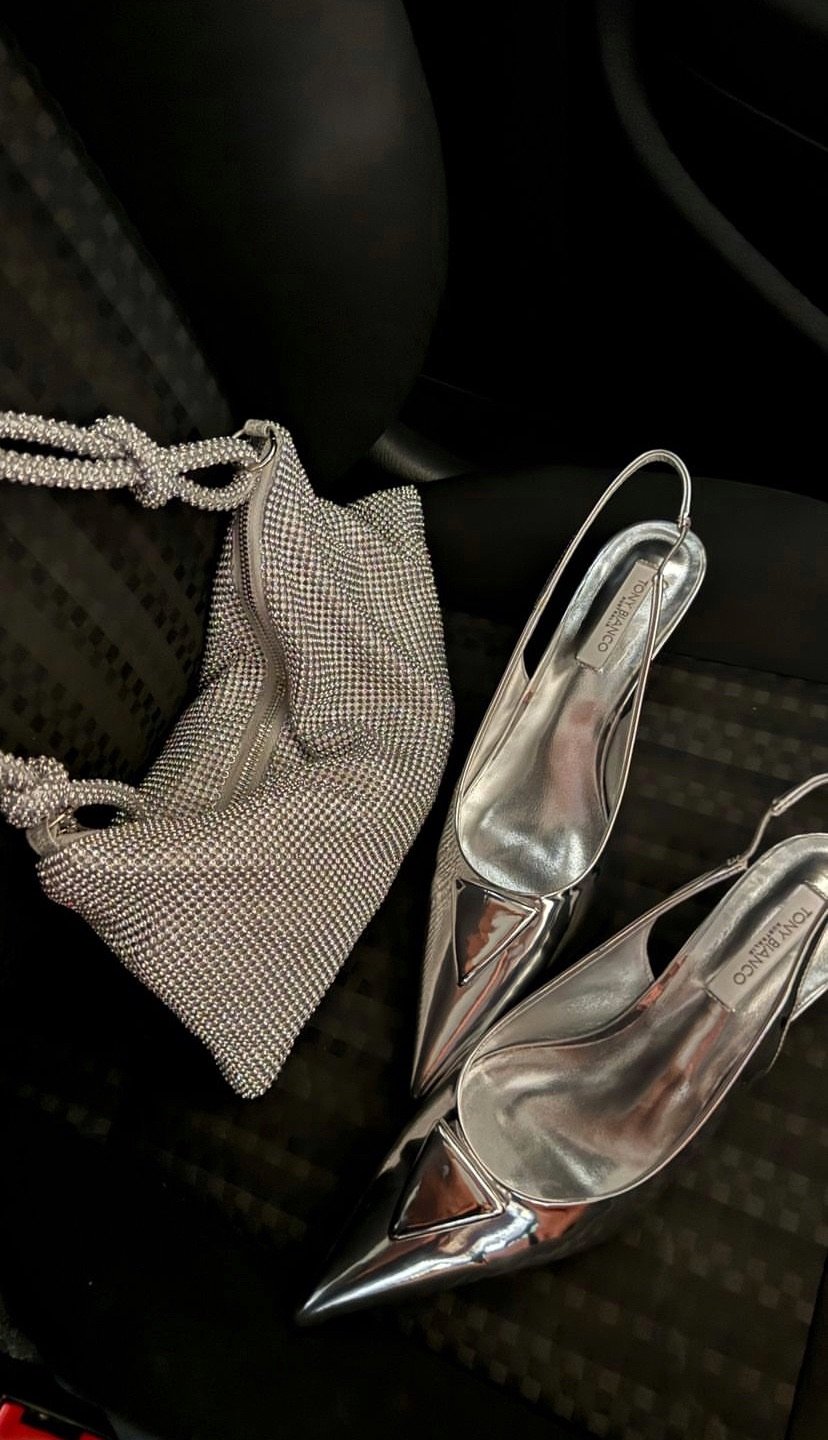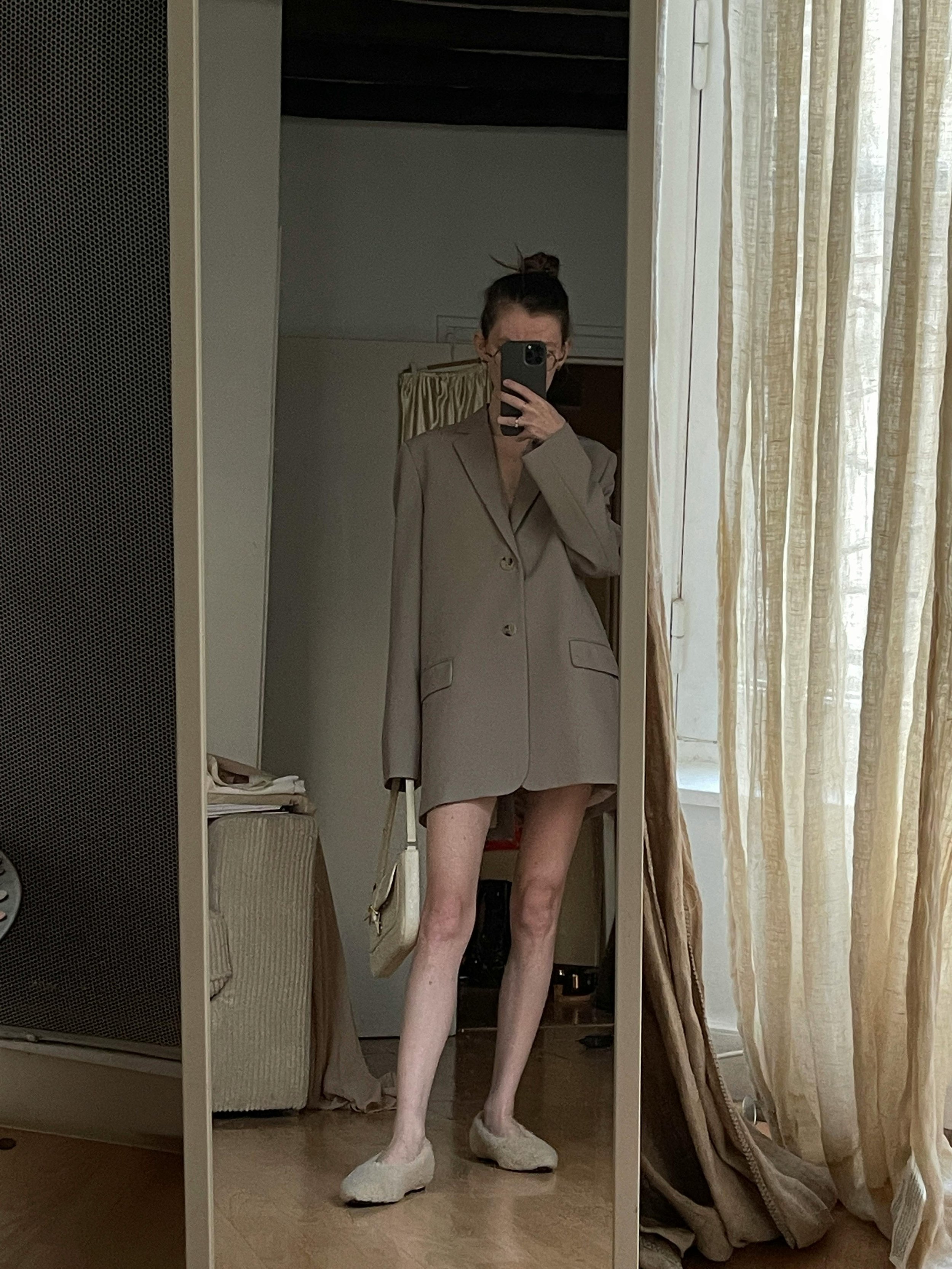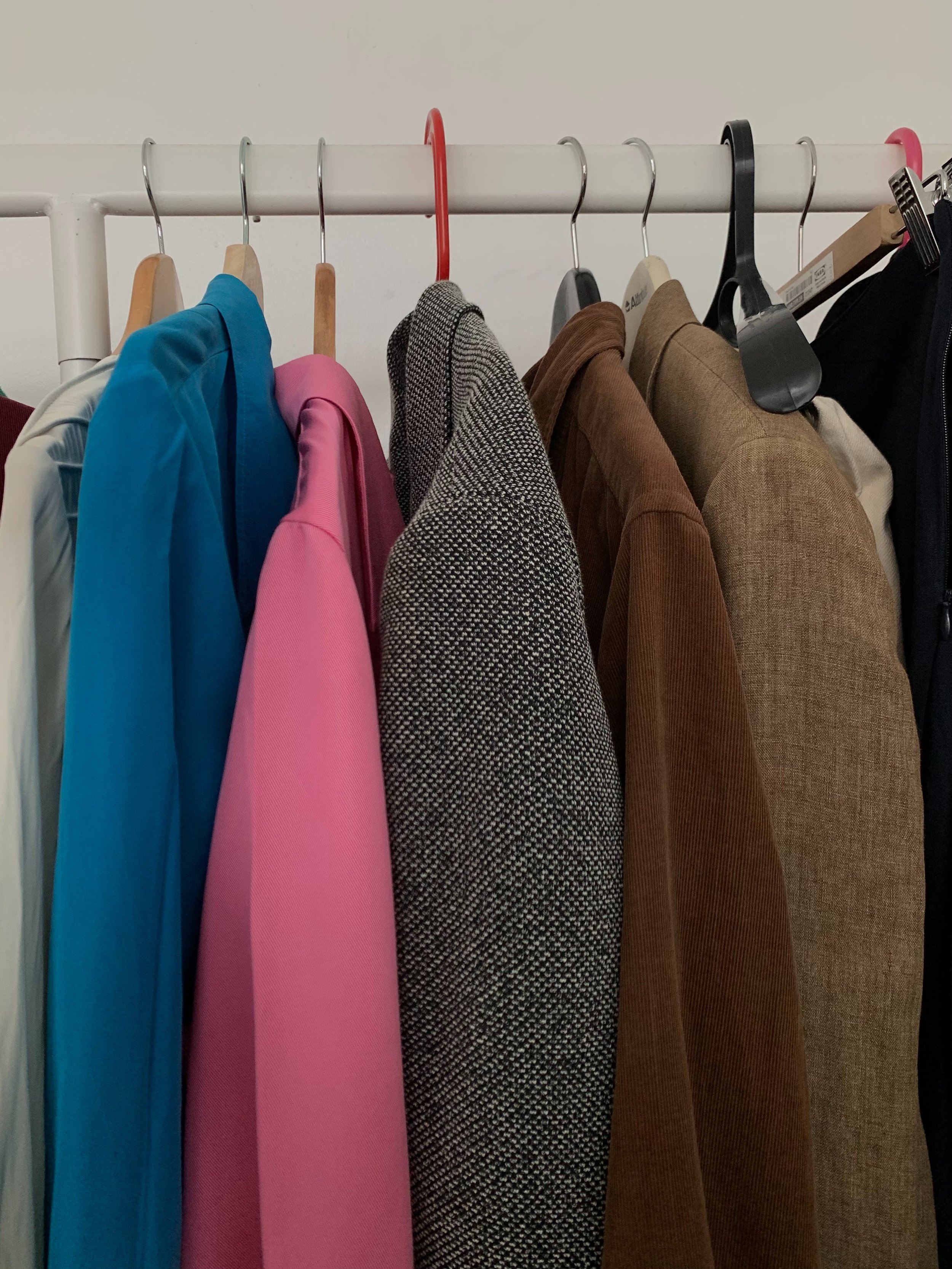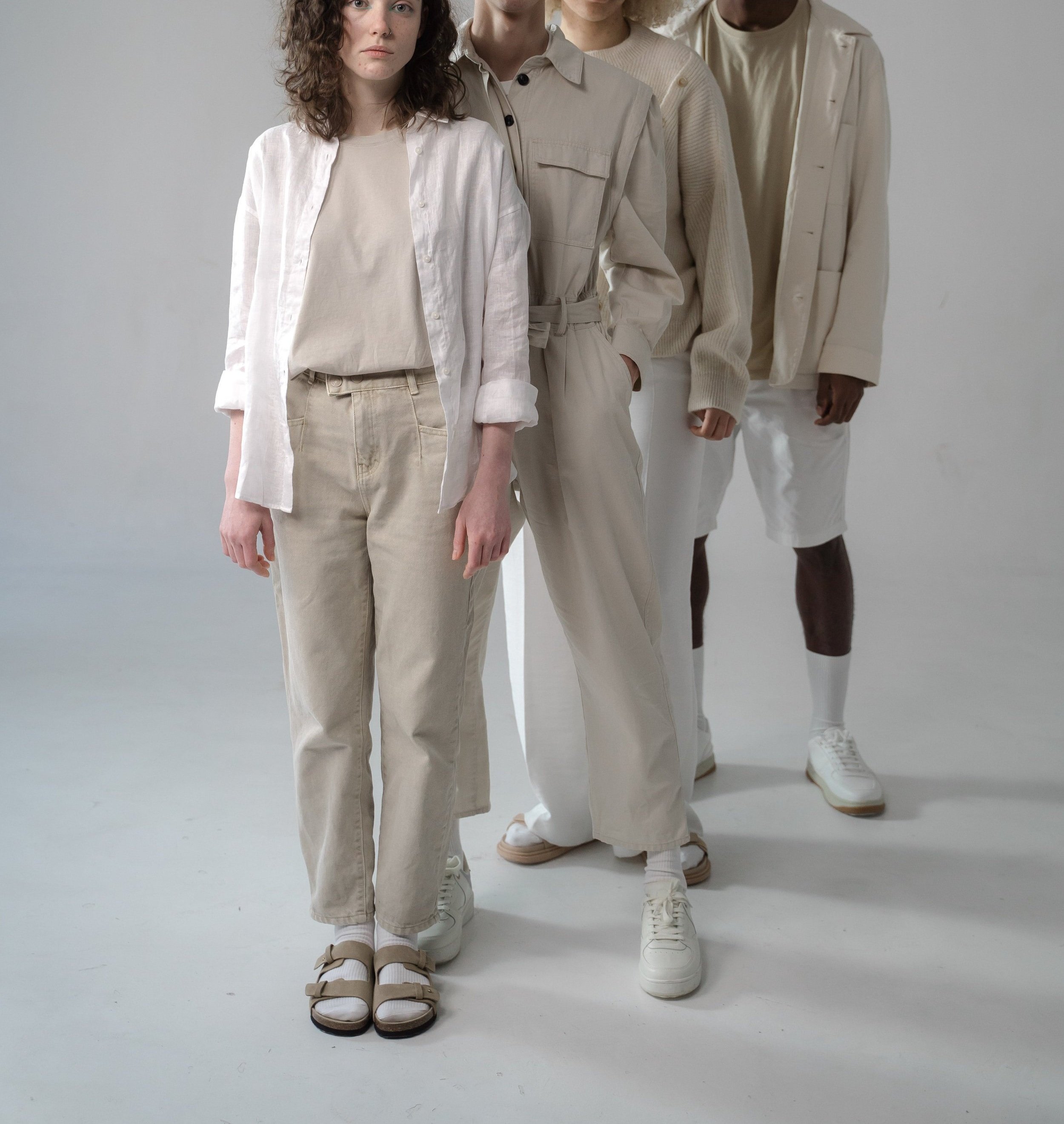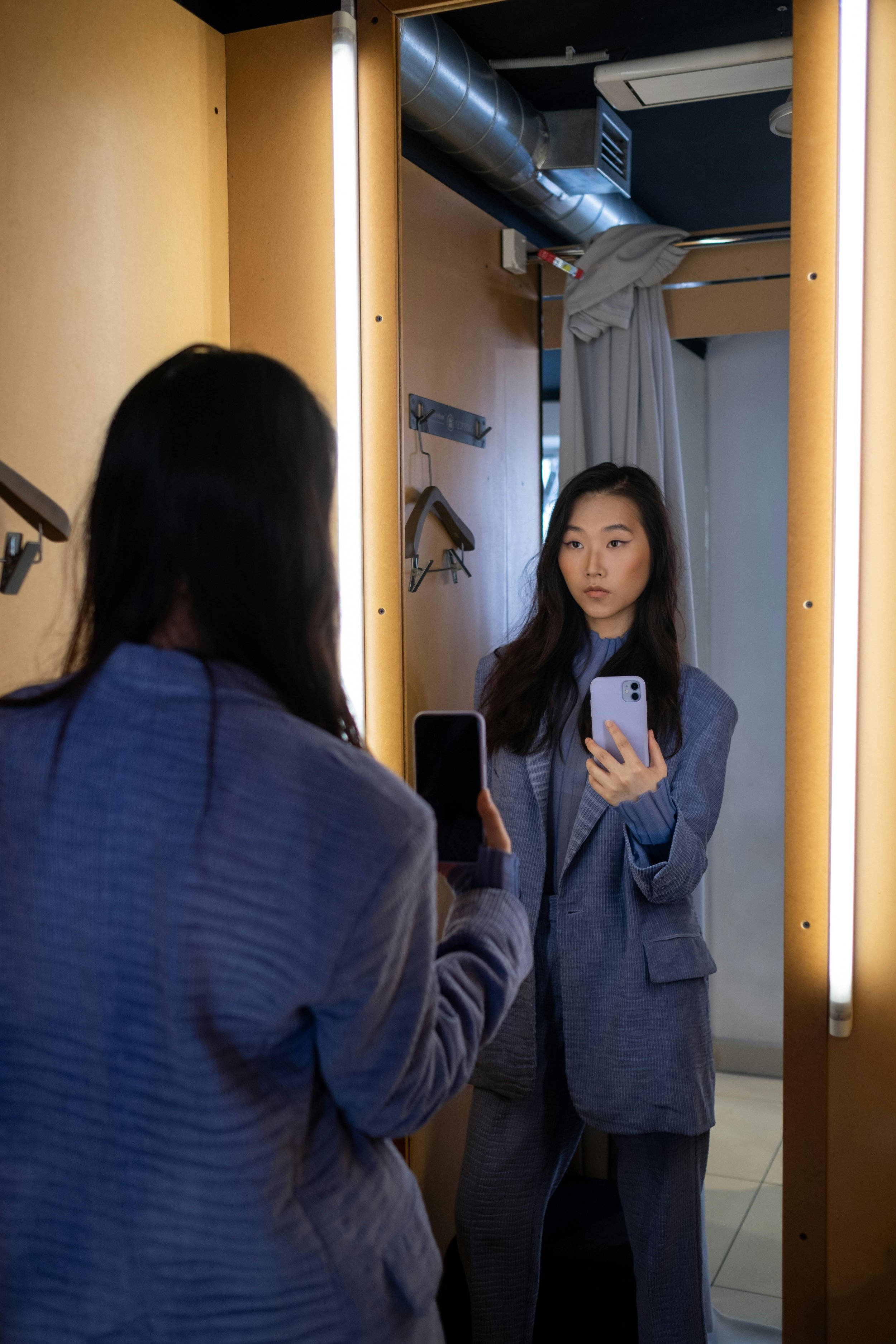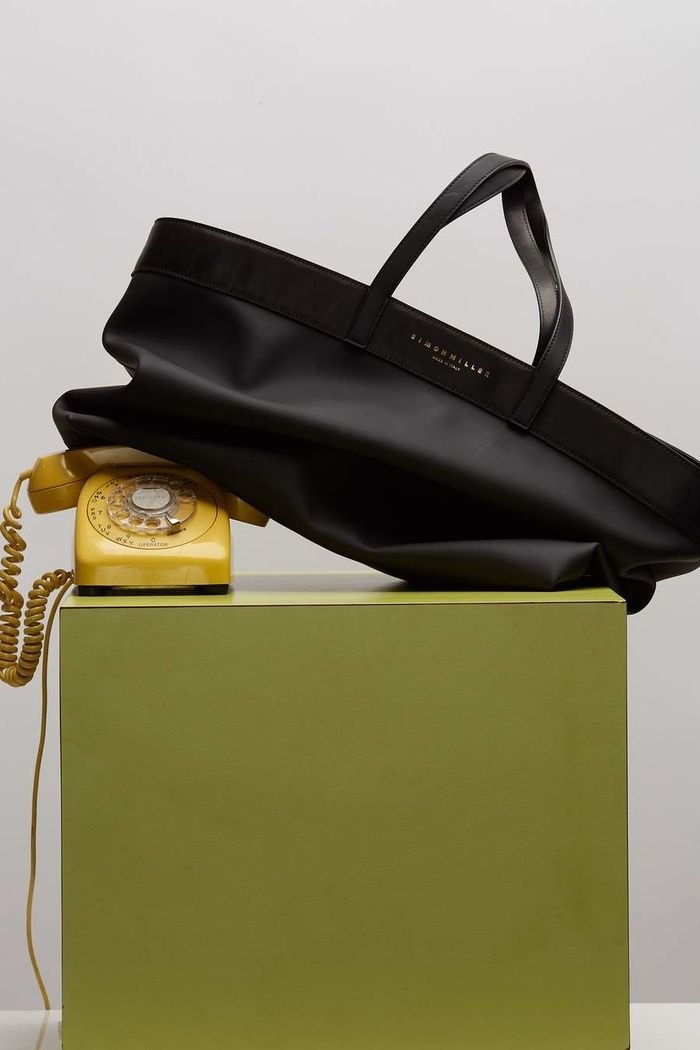9 Revealing Questions to Help You Spot High-Quality Clothing
Sometimes, we find ourselves at Indyx *intentionally* scrolling through Tik Tok in the name of market research (boy, do we love our jobs!). But, after seeing countless Shein hauls ending with "and, it’s super high quality!" we’re left wondering… have years of fast fashion confused us as to what quality clothing actually is?
When shopping for quality, our knee jerk reaction is to associate it with certain brands and not with others: “X brand is high-quality, so you can confidently buy anything from it; Y brand is low-quality, so avoid it at all costs”.
But, does choosing to maintain a closet with high-quality clothes mean never buying from stores like Forever 21 and H&M ever again? Our short answer is…no! Our perspective on the issue is more nuanced that just making blanket statements for brands (spoiler alert: it gets slightly controversial *wink wink*).
If you are here, you are obviously interested in improving your quality-spotting skills - and we are here to support you! Before we get into the nitty-gritty of how to spot quality clothing, let's get on the same page about what quality means in the first place.
What Exactly Do We Mean by “Quality” Clothes?
When different people say something has high quality, they can mean slightly different things by it. So, it’s worth taking a moment to pause and define what we’re really talking about. “Quality” usually refers to one or more of three different characteristics: durability, the use of expensive production techniques, and a luxurious feel.
Durability
When we define high-quality clothing as durable, we mean they can stand the test of time. They can be relied on to last a long time in your closet and be impervious to everyday wear-and-tear. In other words, they won’t quickly fall apart or unravel with normal wear.
Expensive Production
While more expensive production techniques tend to *correlate* with durability, they don’t always go hand-in-hand. Still, many people consider more expensive techniques - especially those associated with heritage traditions - to be higher quality, regardless of whether those techniques lend greater durability.
For example, a leather wallet hand-stitched in Italy may not necessarily last any longer than a durably machine-stitched one made in China, but it comes with a handmade, heirloom feel that may just exude a high-quality feeling that gives the owner all the warm, fuzzy feelings. That brings us to my last point…
Luxurious Feel
Undoubtedly the most subjective category of high-quality characteristics, a luxurious feel makes an item seem - look and feel - more expensive, regardless of whether it actually lasts a long time or costs more. Sometimes, people associate this feeling of luxury with quality even more so than durability and price.
Examples of items that feel luxurious are pieces in solid neutral colors, solid metals, and fabrics like linen, velvet, and silk.
In this article, we help you identify quality as a combination of these individual definitions: items that will continue looking and feeling luxurious for a long time. But, we encourage you to adjust to your own definition of quality based on your personal priorities.
Why Should I Shop For Quality?
Gaining expertise in finding high-quality clothes takes some time, attention, and practice, but it certainly comes with great rewards. When you shop for quality…
You reduce your waste
When you focus on finding the best quality clothes, you avoid having to deal with items falling apart. According to The True Cost, a 2015 documentary about fast fashion, the average American throws away 82 pounds of clothes every year. That’s a lot! Investing in high-quality clothing removes you from that astounding statistic.
Well, that’s assuming you also stick with your choices! Most of the items we collectively discard aren’t actually falling apart - we just grew bored of them and moved on to the latest trend. Investing in quality items can help reduce your waste, but that has to go hand-in-hand with the intentional strategy of buying things you’ll want to wear for a long time (and we at Indyx can help with that!)
Still, even if you do end up moving on from an item sooner than expected, having it be of high-quality makes it more likely that you’ll be able to resell it to a new owner who will treasure it.
You save money
You may feel like you are spending less by buying cheaper pieces, but as they succumb to wear-and-tear, you end up having to shop more often or spend extra money with repairs. Spending a bit more upfront allows you to wear the pieces you invest in for longer and helps you achieve a lower cost-per-wear.
You look & feel better
Investing in higher-quality clothing also means investing in yourself. You are a high-quality person, so your clothing should reflect that! High-quality fabrics feel much better on your skin. By raising your standards for clothes, you allow your internal value to manifest externally.
Is Quality Correlated with Price?
People often assume that more expensive items must automatically have higher quality. Are more expensive clothes better quality? Sometimes, but not always.
First, we’d say there is a definite “price floor,” below which it just isn’t possible to produce quality items. Consider a Shein t-shirt being sold on their website today for $2.68. Really think about it. It is reasonable that the cotton could be grown, milled into fabric, sewn into a t-shirt, packed & shipped to the Shein warehouse and then to you, all for just $2.68 - and have that all happen in a quality way? Of course not.
This is an obvious example, but even the $8 Target tee or $15 Uniqlo one are also questionable.
A higher price point *does* often open up access to more expensive, luxurious-feeling fabrics and construction techniques - there will be a real difference between a blazer sold at $69.60 and one at $750, for example.
However, more expensive does not automatically equal higher quality. People sometimes give esteem to higher priced products than to more affordable alternatives because of the Marketing Placebo Effect.
Designer name inflation is real. The price of the designer product includes more than just the cost of goods of the product; we pay more because of the brand’s status. Take a look at this example, where a leather expert disassembles an Hermes card holder.
While a product with the same materials and construction techniques would cost no more than $50 to make (and so, might retail for $100-$150 based on typical fashion margins), HERMES gets away with selling it for $470.
We’re not making a blanket statement against purchasing designer products. If you’re willing to pay for it, you’re not wrong for wanting the Hermes label! Our point is that, with the right knowledge, you can acquire an item of the same quality for way less money.
Are certain brands higher quality?
The short answer is yes. There are correlations, with some brands consistently delivering poor quality, while other brands are known for offering items that are worth the investment.
However, there are certainly no guarantees. Many of us have that one Forever 21 item still in our closet that has inexplicably stood the test of time. On the flip side, we’ve all also experienced buying something from a brand known for quality that has disappointed us. So, our guiding principle at Indyx is exercising discernment.
It is better to develop the skills to identify high quality clothing looking at the characteristics of individual items than to make blanket statements about brands.
For example, are Shein clothes good quality? Calling back to our prior point on price floors, Shein’s astoundingly low price points make it hardly possible that their items have decent production techniques and good quality materials. Even apart from the poor workmanship practices, Shein’s business model relies on their clothes not lasting a long time, releasing between 700 and 1000 new styles a day.
That might be obvious, but other examples are less so: is Banana Republic good quality? While you still need to evaluate each individual item to know for sure (take Jennifer Wang's Tik Tok for example), their prices at least support the *possibility* that clothing from Banana Republic could be high quality.
Still, it will always be best to assess items individually using our tips to identify high-quality clothing. Let’s get to it!
How Do I Identify High Quality Clothes?
When shopping for quality clothing, you should focus on two components: material and construction. The material refers to what the item is made of, while construction relates to how it is made.
When it comes to an item’s materials, this is what we’d advise you to look for:
1. Is the fabric too thin, or even see-through?
If you put your hand through a piece of clothing and can easily see the outline of your skin, that is a problem. This ends up making a piece of clothing look cheap, as well as be more susceptible to rips and damage. You also risk the faux pas of people seeing your underwear through your clothes - oof!
When an item has high quality, even more delicate materials like silk will have a substantial weight to them. Unfortunately, fast fashion companies have normalized thin, cheap fabric. To reset your perspective on how clothes should feel like, you can usually find quality pieces to feel at a vintage store or even in a modern men’s section.
2. Are the embellishments plastic?
Take a look at the zippers, buttons, hooks, and embellishments. Are they made of plastic? Or sturdy materials like metal, wood, or horn? Plastic is much cheaper to produce, but it shows. It also breaks much more easily.
3. How long will this item look new?
Regardless of composition, some fabrics and materials tend to show signs of wear more easily and quickly than others. Even with high-quality construction, some materials will look new for less time than others.
For example, I personally stay away from suede, especially in shoes. I’ve found that no matter how careful I am, a couple of uses are enough to make suede items seem old and unkempt. Some other high-maintenance fabrics to be cautious about investing in include lace, chiffon, and organza.
4. Is the composition mostly synthetic or natural?
This point is not as black-and-white as it may seem, as the ideal can actually vary depending on the type of item you are looking for. We love a good nuanced argument.
Natural fabrics, as the name suggests, are the ones we can find in nature, like cotton, silk, linen, and wool. Synthetic materials, on the other hand, are created in a lab, including polyester, spandex, nylon, and rayon.
It has almost become common wisdom that synthetic materials are inherently bad, but that is not always the case! Synthetic materials have some neat properties that natural materials don’t always have, like stretch and recovery, or resistance to stains, smells or shrinking. And, they are typically easier to care for - which is a big deal if you value longevity and don’t want to deal with a complicated laundry day.
Natural materials typically cost more and feel more luxurious, but they can require more care and aren’t necessarily more durable.
Now, we are definitely not saying you should eschew natural fibers and buy a closet full of polyester. We would just like to refute the bad reputation synthetic materials often get, since there are occasions when seeing synthetic materials in the tag can be a good sign. Here is a cheat sheet to make it more simple:
When to go with natural fibers:
If you are buying inexpensive items from a fast-fashion company, be skeptical of synthetic materials. With low-cost fast-fashion products, synthetic materials can point to low-quality choices elsewhere in the garment, indicating less expensive and lower quality construction techniques that will actually cause the garment to fall apart.
When shopping for sweaters, we recommend that they should always be 100% natural materials like wool, cashmere, or cotton. In this case, the item’s performance does not require synthetics, and their inclusion indicates the brand is cutting corners by bulking it out with a less expensive material.
When to go with synthetic materials:
If you’re shopping for workout clothes, easy-care work pants, or other clothing that require stretch and recovery, it is fine and expected for items like these to be partially or totally synthetic.
When shopping for vintage items, you will likely find a lot of items that are fully composed of synthetic materials like polyester or acrylic. This is not necessarily a bad sign! Construction techniques have worsened in recent years, especially because of the rise of fast-fashion companies, but items from earlier decades tend to be pretty well-constructed.
As a very quick rule-of-thumb, we would say that synthetic composition up to about 30% in an item might be justifiable for performance reasons. Anything over that percentage would suggest that there were cost-cutting choices made in other areas as well.
It can be easy to hyper focus on the material component of quality, since it can be easily identifiable on the tag. However, the materials are only one piece of the quality puzzle. Clothing items do not usually fall apart because of the materials themselves, but because of how the materials are assembled.
Construction is less commonly understood, as it requires you to go a little out of your way to learn about how clothes are put together. But, this is the area where companies tend to cut corners the most, exploiting the lack of public knowledge to increase their profit margins. The best way to not be taken advantage of is by educating yourself on what quality construction looks like.
5. Does it seem like they skimped on the *amount* of material used?
While the amount of material used doesn’t necessarily impact durability directly, it is a tell-tale sign that they are trying to cut corners in manufacturing, and so, may be making some other questionable choices elsewhere. You can identify this by checking the following:
Length: Do the sleeves or overall length of the garment seem just a little too short? This might benefit you if you are a more petite person, but is otherwise an annoying sign of cost-cutting.
Pleating: Lots of volume is a good sign, since lots of pleats = more fabric used.
Hems: Seam allowances at hems should be .5” at least, but 1” ideally. This is not just an indication of a high-quality construction but is also practical since having a decent seam allowance lets you adjust the length.
Lining: Some types of garment - like suits, coats, and certain dresses and jackets - should have linings for comfort and shape. If the item is not lined when it feels like it should be, it is usually because producers cut costs in production.
6. Do the seams and stitching appear well made?
You can tell whether the stitching was done properly by answering the questions on the following checklist:
Is the stitching straight?
Is the stitching evenly spaced?
Is the stitching smooth? High-quality stitching does not feel bulky or feel like it’s “3D.”
Is the stitching free of loose threads?
Is the stitching tight? Try lightly pulling the fabric apart at the seam; any hint of a separation is a sign of poor construction.
Are there closed seams? This means the seam allowance (the space between the fabric edge and the stitching line on the pieces of material being sewn together) is hidden. The less visible extra material and stitching, the better.
Do the seams not appear to be twisting or pulling? If they do, that is a bad sign. Fabric has a “direction” (the warp and weft), and high-quality production respects that direction in making sure pieces are cut out of the fabric in the same orientation. But, this method often requires more raw fabric yardage. When the manufacturer prioritizes cutting and sewing together as many pieces out of the fabric as possible, regardless of the direction, the lack of care and attention result in twisting seams.
7. Do the patterns match?
Twisting seams are not the only problem that arises from cheap techniques that disregard the direction of the fabric. This is especially problematic when the garment is made with patterned fabric. If the print on the fabric does not match across the seams, that is a sign of careless construction that prioritizes low cost over quality choices.
Once you start noticing pattern matching (or, mismatching…), you can’t unsee it. It just looks wrong!
Heather, one of our favorite follows on TikTok, put together some great examples of pattern mismatching and poor seams:
8. Is the zipper concealed?
Similarly to the idea with closed seams, high-quality clothing usually has a neatly covered zipper.
This indicates that the construction was more intentional and expensive. In our opinion, even though concealed zippers aren’t necessarily more durable, they create a more luxurious and finished look
9. Does the item use easy-fit construction techniques?
Clothing with zippers or hook closures require more money, time, and better construction techniques to get right. Sadly, instead of investing in creating pieces that feel tailored and fit well, companies often make “adjustable” clothing in order to skip the trouble of nailing fit in the development process. Shirring is a prime example of this, and Reformation is a notorious offender.
While buying items with easy-fit construction may seem like a quicker and more practical way to shop (especially if you’re shopping online or have non-standard measurements), these cheaper techniques are a telltale sign of cost-cutting in construction. Even if the shirring itself doesn’t particularly bother you, it is a warning sign that there may be other aspects that lack quality and will reveal themselves as you wear it.
If there is a fit reason you gravitate towards easy-fit styles like shirring - say, you have a large bust - we want you to know you have other options! We would always recommend, if you can, buying a size or two up in a more properly constructed garment and have it tailored to fit you exactly. This does obviously cost a little more, but it results in a high-quality garment perfectly made for you. Not only will you always look and feel better wearing a tailored item, you’ll also be more likely to wear it often and treasure it for a long time.
Final Thoughts
In today’s world where price or even brand isn’t a sure thing to ensure quality, it’s critical that you learn for yourself a little bit about how clothes are made so that you can spot high-quality clothes for yourself. Equipped with this information, we hope you feel empowered to suss out good from bad quality clothes, regardless of what’s on the label - and, if you ever need a little help, we’re here for you!
-
The short answer is…anywhere! When people ask where to buy good quality clothes, they usually want a simple answer or a link to an online store, but the truth is that when you learn to spot signs of quality clothes for women, you can find them anywhere. You can use the tips in this article to help you identify good quality clothes regardless of where you shop.
-
Yes, and increasingly so.
Initially, outlet stores worked as the final destination for items that - for whatever reason - did not sell at full price. Sometimes the brand produced more than it sold; other times brands dispatched outdated items to an outlet to make room for a newer collection.
However, what many outlet shoppers don’t know is that these lonely items only make up a small portion of items selling at outlet stores. Over the years, outlet stores have become businesses in and of themselves, with lower-quality items produced specifically for these outlets.
For example, only 20% of products at Nordstrom Rack come from Nordstrom’s mainline stores, with the remaining 80% being brought strictly for the outlet. Many retailers including J. Crew, Gap, and Saks, take advantage of the unknowing clientele by stocking their outlet stores with cheaper, lower-quality product lines.
This doesn't mean you should stop shopping at outlet stores altogether, especially if you enjoy the sense of victory that comes with finding high-quality items at discounted rates. In our opinion, it just increases the need for learning how to identify signs of high quality in individual items.
Isa is a communications specialist, writer, and content creator. In her free time, she likes reading, thrifting, and decorating her place to feel like a retro-modern Pinterest board. If you see her in public, she’ll likely be enjoying a few scoops of gelato and/or admiring strangers’ dogs.


